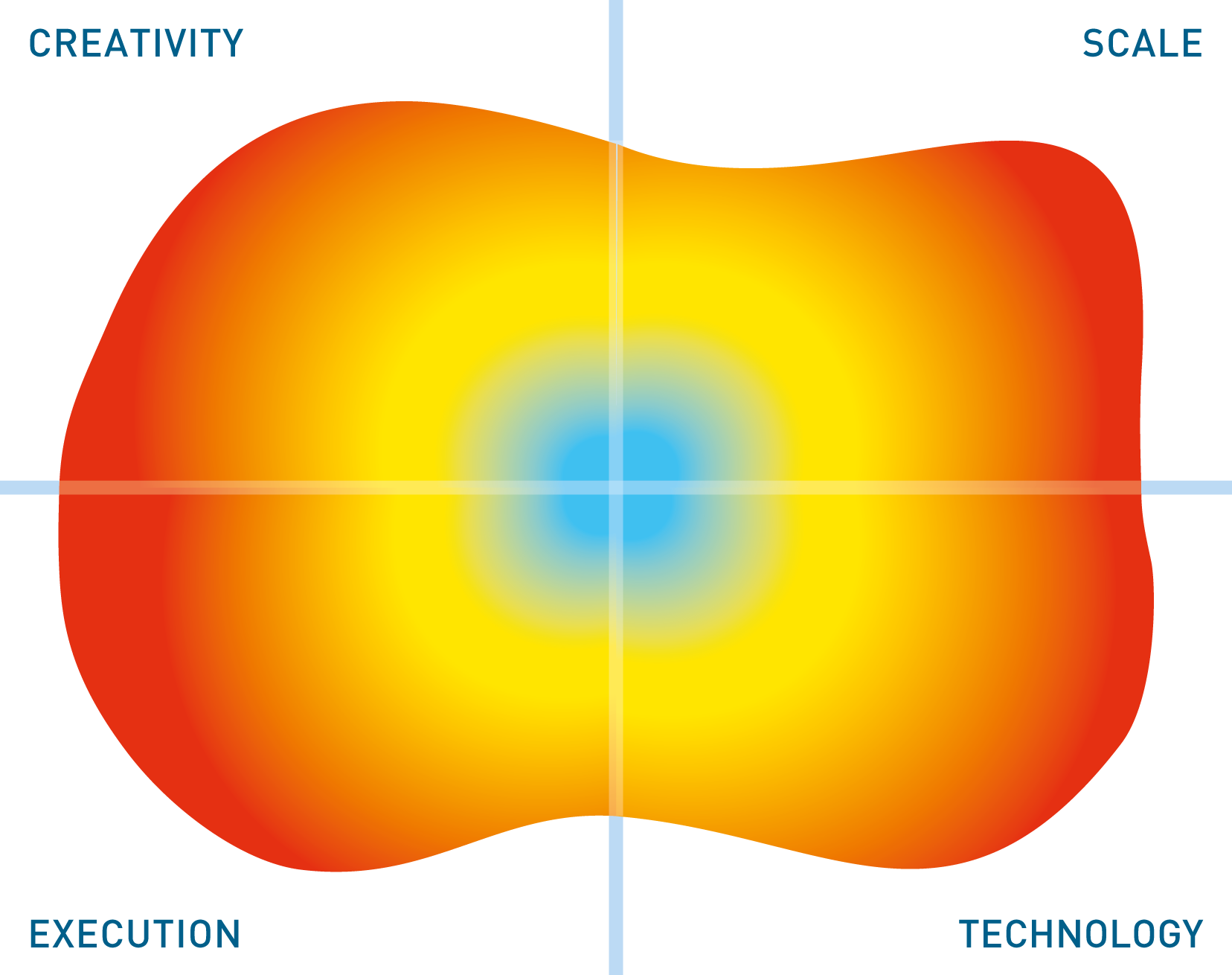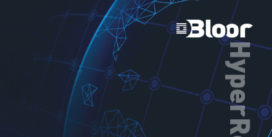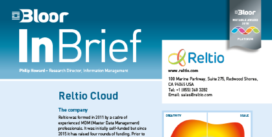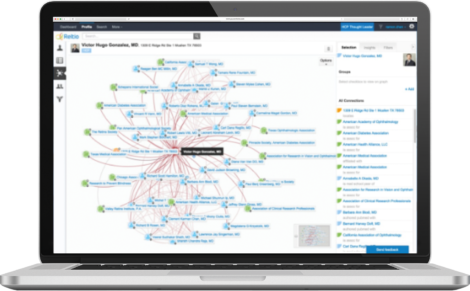
Figure 1 – Reltio Self-Learning Graph
The Reltio platform provides the sorts of things that you would expect from a master data management solution, including data governance capabilities (data profiling, cleansing, cataloguing, and so on). More than a “single version of the truth” it offers multiple best versions of the truth, one for each user role, based on the understanding that under different business scenarios and with different users, one value may take precedence over another. Similarly, it includes collaborative workflow capabilities that enable business and IT people to work together within a governance environment, and it provides data lineage, audit capabilities, and so forth.
Reltio Self-Learning Graph (as illustrated in Figure 1), makes it easy to traverse and discover relationships, with much better performance than when you join across multiple tables in a relational database. Under the covers, it employs a multi-model architecture (leveraging Cassandra) to optimise storage for various structured and unstructured data types along with in-memory search via ElasticSearch. This means that it is practical to implement cross-domain master data, and bring in transactions and interactions, as well as media within Reltio Cloud where that is often not the case when using traditional MDM approaches. New data types, attributes and changes to the business data model are immediate and seamless with no downtime.
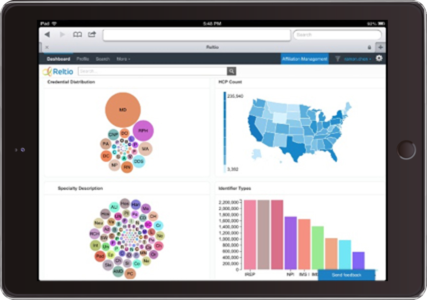
Figure 2 – Reltio IQ
Another major feature of the Reltio Cloud is provided by Reltio IQ. This provides machine learning based insight and recommendation (see Figure 2) capabilities built into the product via Apache Spark. These include ranking, segmentation and clustering algorithms as well as trending and predictive capabilities. Thanks to the use of Google Maps, location attributes can be used in search and displayed geographically where required. We should make clear here that Reltio is not claiming to be an analytics or visualization vendor, simply that it has functionality that provisions reliable data for analytics, using Reltio IQ to improve data quality and enabling the ranking and scoring of profiles. In fact, Reltio partners with Spark vendors such as Qubole and Databricks, as well as BI visualisation tools such as Tableau. Further, leveraging these analytics, there is machine learning built into Reltio that will make recommendations based on a user’s role and goals, allowing them to take action based on insight, then close the loop on the outcomes for continuous self-learning.
Finally, we should comment that the Reltio platform includes significant collaborative and crowd sourcing capabilities. It allows annotation, commenting and social “thumbs up or down” by frontline business users. This provides much greater transparency than is usually available and can foster a real sense of trust in the data, with information being updated in real-time.




